Whether you want to extend your vegetable harvest into fall or you want to establish native plants, you have plenty of options for planting in Southern California in October. While states in the midwestern United States prepare for cooler weather and the risk of frost, Southern California often experiences warmer temperatures throughout October. The extended growing season allows Southern California gardeners to be more creative with planning. If you are looking for ideas for plants to add to your garden, you have come to the right place. Check out the best things to plant in Southern California in October below.
What is Southern California’s Growing Zone?
Southern California features a Mediterranean climate with warmer temperatures on average compared to the rest of the state. However, gardening in the western part of the United States can be tricky due to other factors beyond average temperature. The USDA, for example, classifies Southern California within their 5a to 11a hardiness zones. The USDA Plant Hardiness Zone Map measures the minimum winter temperatures for an area. Another classification system exists that looks beyond winter lows. The Sunset Climate Zones, created by UC ANR and Sunset Magazine, offer more precision because it looks at the length of the growing season, timing and amount of rainfall, winter lows, summer highs, wind, and humidity.
A helpful chart from Santa Monica College offers guidance for the optimal time to grow many popular plants in Southern California. All of the edible plants on this list reflect information from this chart.
Best Things to Grow in Southern California in October
1. California Wild Lilac

With a name that translates to ‘spiny plant,’ the California lilac is versatile and beautiful.
©Susan Edmondson/Shutterstock.com
California lilac, or Ceanothus, is a fast-growing evergreen shrub with beautiful colors ranging from cobalt blue to violet. This plant proliferates in many different soil types and tolerates alkaline-rich soil. Most seasoned gardeners recommend starting California lilac in the fall to take advantage of winter rain, as long as you have well-draining ground. Winter rain in California can help support root growth for the Ceanothus.
2. Bush Monkey Flower
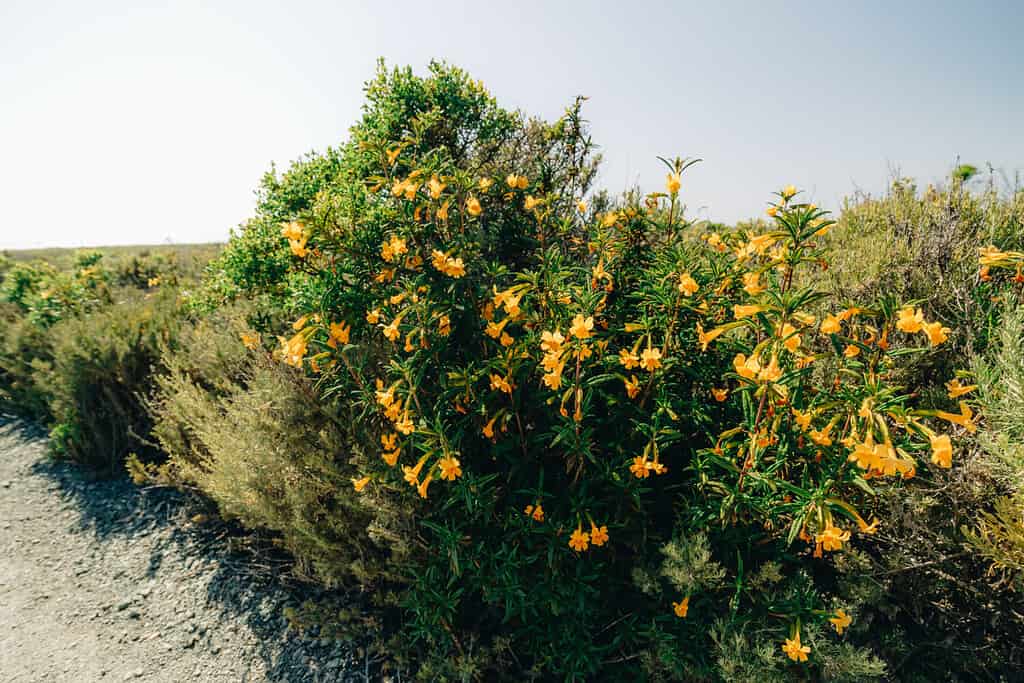
Bush monkey flower comes in many regional variants, with colors ranging from deep red to salmon and orange to bronze.
©HannaTor/Shutterstock.com
A fast-growing native, the bush monkey flower has a frustrating taxonomic history. Due to uncertainty involving its many regional variants and hybrids, it is listed in both the Limulus genus and the Displacus genus. This small shrub can grow about 2 feet tall and has dark green leaves with trumpet-shaped flowers. Hummingbirds feed on this shrub, which can flower all year long. Bush monkey flower also supports butterflies and other pollinators vital to the Southern California ecosystem.
3. Wildflowers

Native wildflowers add bursts of color to any Southern California garden or landscaping.
©Megs Lang/Shutterstock.com
Get your native wildflower seeds ready to go! According to the UC Davis Arboretum and Public Garden, October is the best time to spread wildflower seeds in Southern California. Wildflowers can begin to germinate in the winter if planted before the fall rains. The plants become better established with this head start, and you can look forward to beautiful bloom from early spring into summer.
4. Leafy Greens
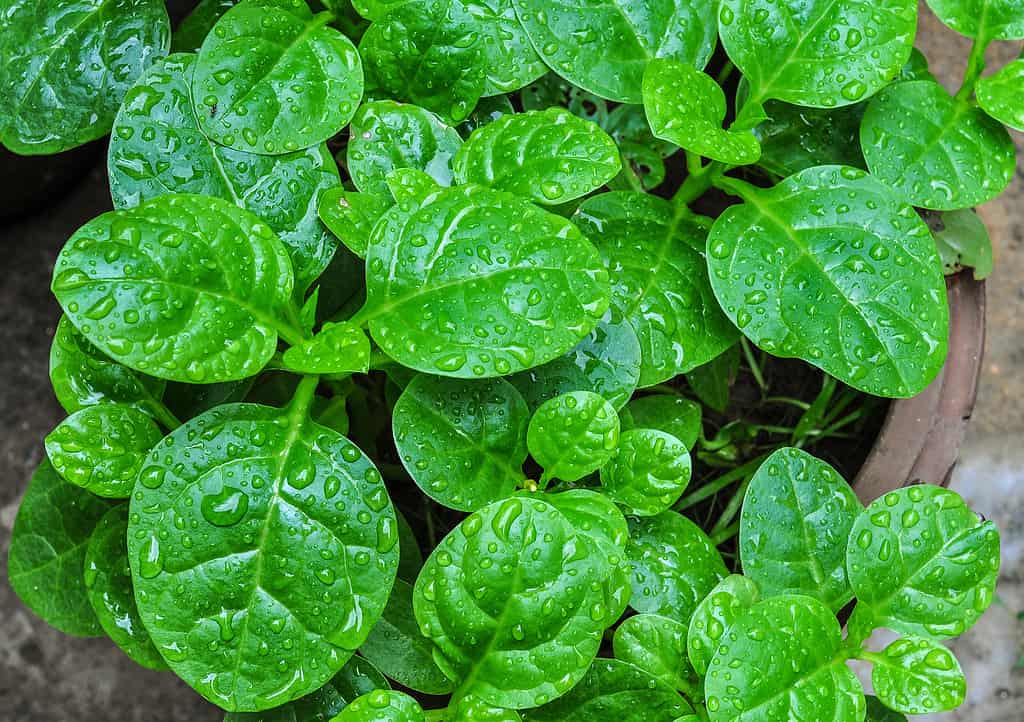
Spinach grows best in cooler than warm temperatures, which can stress it.
Fast-growing, leafy greens, including lettuce and spinach, can be sown directly in the ground in October. Most of these leafy vegetables tolerate slight frosts and will grow quickly. If you want more spinach to harvest in your Southern California garden, sow more every two weeks for succession planting.
5. Root Vegetables
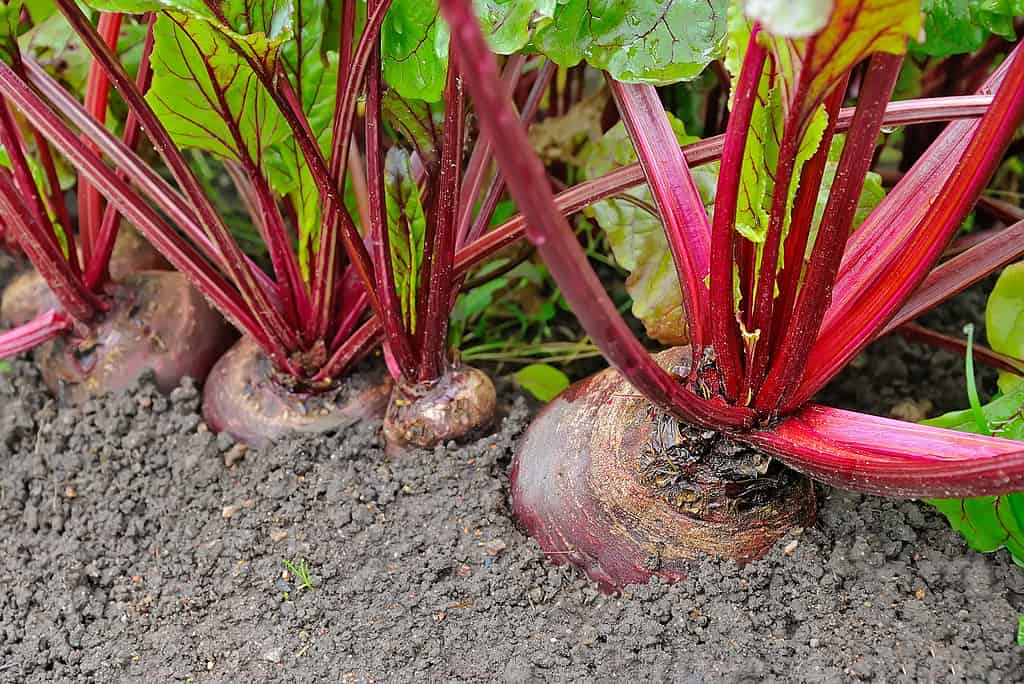
Beets and other root vegetables require sandy or silt loam soil for the best results.
©Nadezhda_Nesterova/iStock via Getty Images
Root vegetables like beets, carrots, and radishes can be sown directly in the ground from seed. Most root vegetables are considered cool-season plants and tolerate temperatures ranging between 55 degrees Fahrenheit and 75 degrees Fahrenheit. When planting rutabagas, carrots, radishes, and other root vegetables in October, you take advantage of more harvest time throughout fall and winter.
6. Fava Beans
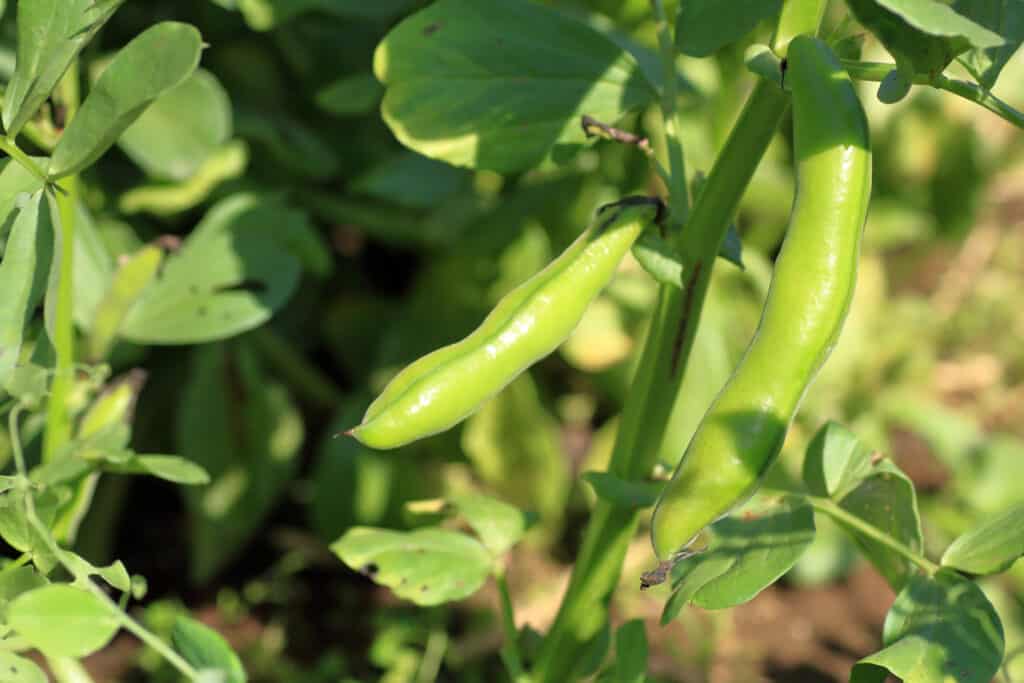
Many Southern California gardeners plant fava beans in October to serve as a crop to cover soil and prevent erosion and weed growth.
©iStock.com/Queserasera99
A standard cover crop for Southern California gardens, fava beans add nitrogen back to the soil. Many people grow fava beans in their Southern California gardens in October to take advantage of a later harvest. Fava beans also go by the name broad beans. Directly sow them in prepared ground 3 to 5 inches apart.
7. Peas
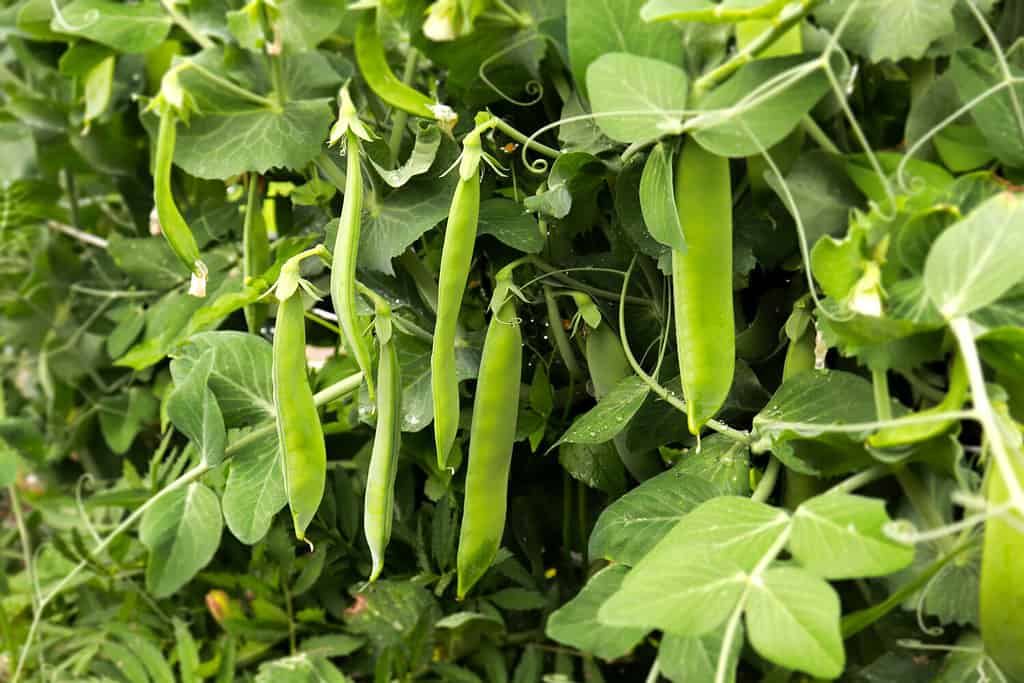
Peas should be harvested promptly to avoid overly starchy, mature peas.
©Natallia Ustsinava/Shutterstock.com
You can plant all peas in October, including sugar snap peas, shelling peas, and snow peas. In October, these plants are best grown from transplants. Begin your seedlings inside, either in your home or a greenhouse, beginning at least three weeks before transplantation. If you plant them in October, you will have enough time to harvest them in another month.
8. Brassica Vegetables
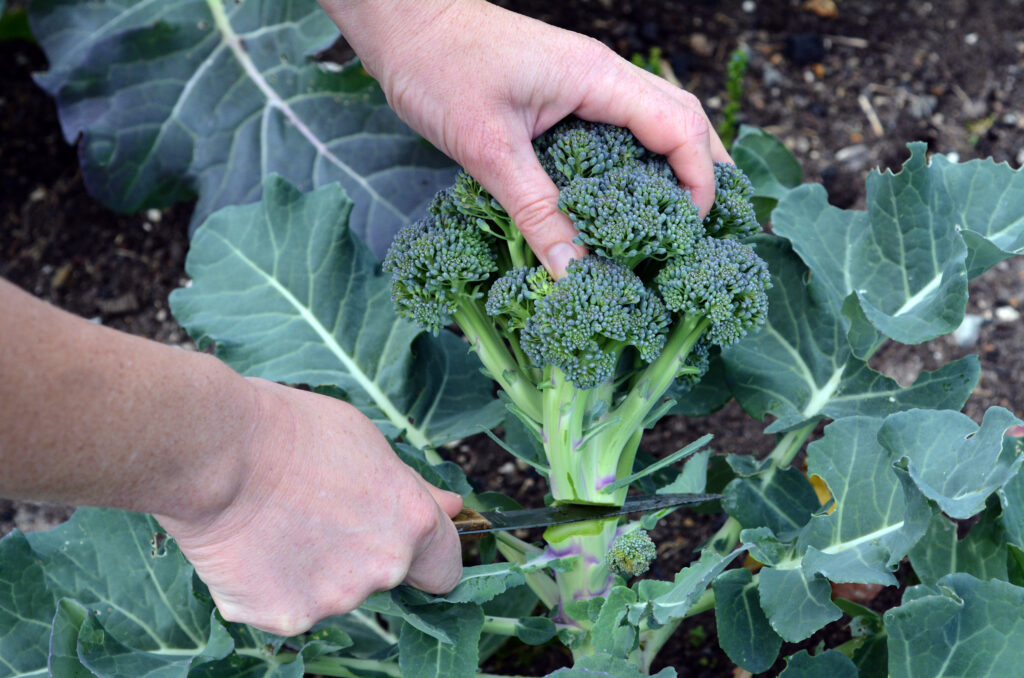
Members of the genus Brassica are often still called cruciferous or cole crops, which is recognized as confusing for gardeners.
©ChameleonsEye/Shutterstock.com
Broccoli, kohlrabi, Brussels sprouts, and Swiss chard are vegetables from the Brassica oleracea species that require transplantation into your Southern California garden. Begin seedlings in August if you plan to transplant them in October. These types of hardy vegetables grow very quickly. Kohlrabi takes about 8 weeks before it is ready for harvest. Cauliflower can take a little bit longer, at 80 to 110 days.
9. Garlic and Onion

Do not plant garlic very deep in Southern California; preferably, plant only 2 to 4 inches.
©nblx/Shutterstock.com
Ideally, garlic, shallots, and bulb onions are planted in Southern California in mid-October. You want to avoid dry soil, but choose a well-draining spot with plenty of sun. These plants require overwintering for a successful harvest in late winter or early spring.
10. Berries
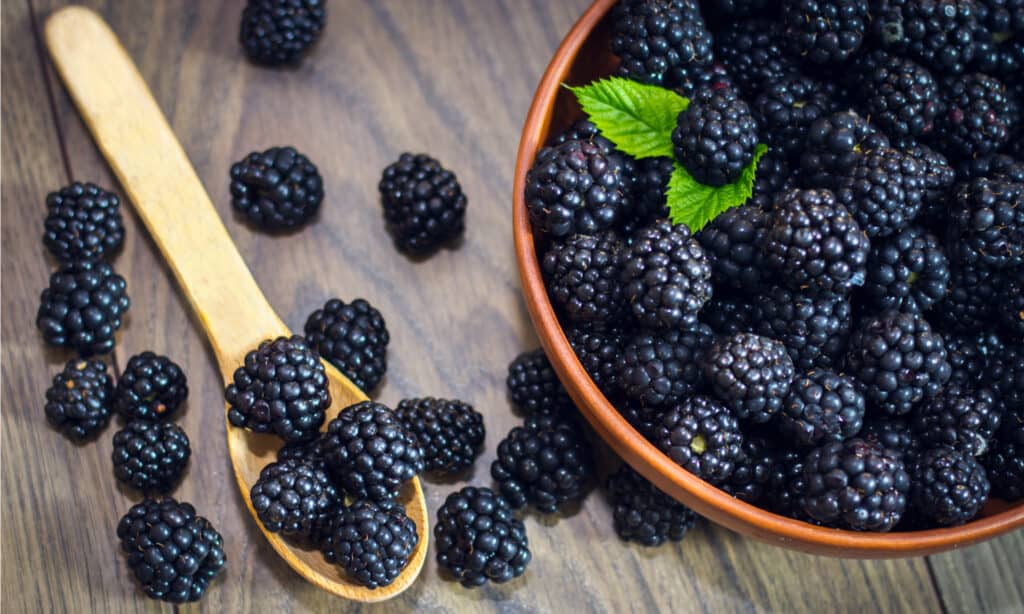
Planting berries in October in Southern California allows for plenty of time for them to become established with solid roots.
©Vipvit/Shutterstock.com
Consider adding a berry bush if you want something sweeter for your Southern California October planting. Blackberries, blueberries, raspberries, and even some varieties of strawberries can tolerate fall planting. For the best results, plant bare-root plants in the fall, winter, or early spring. Choose well-drained, loamy soil for the most success.
Thank you for reading! Have some feedback for us? Contact the AZ Animals editorial team.








